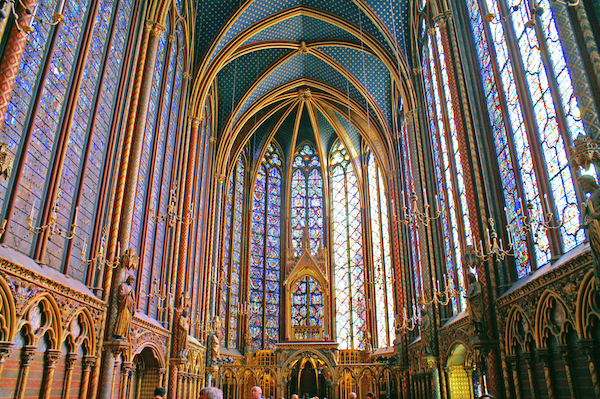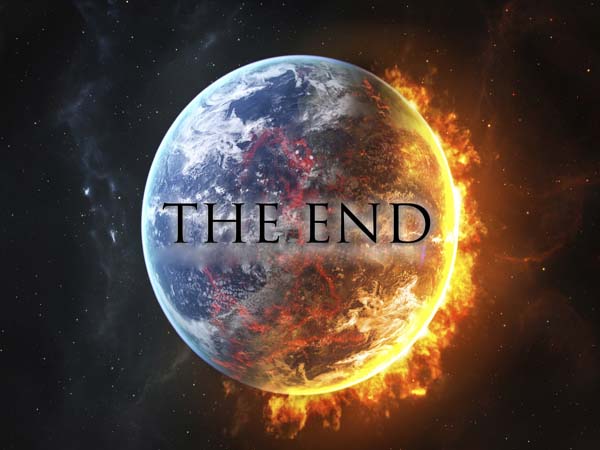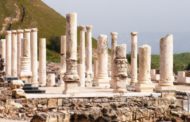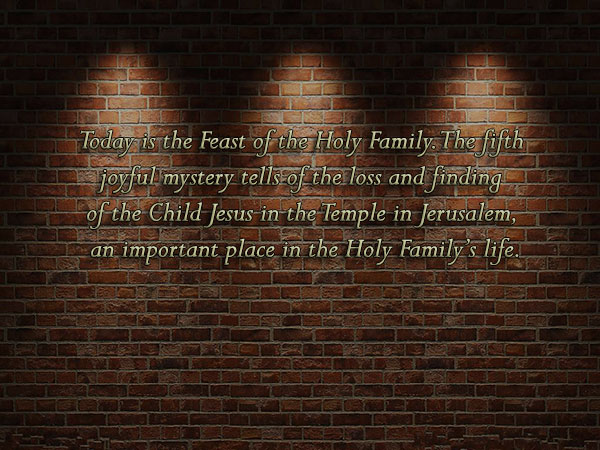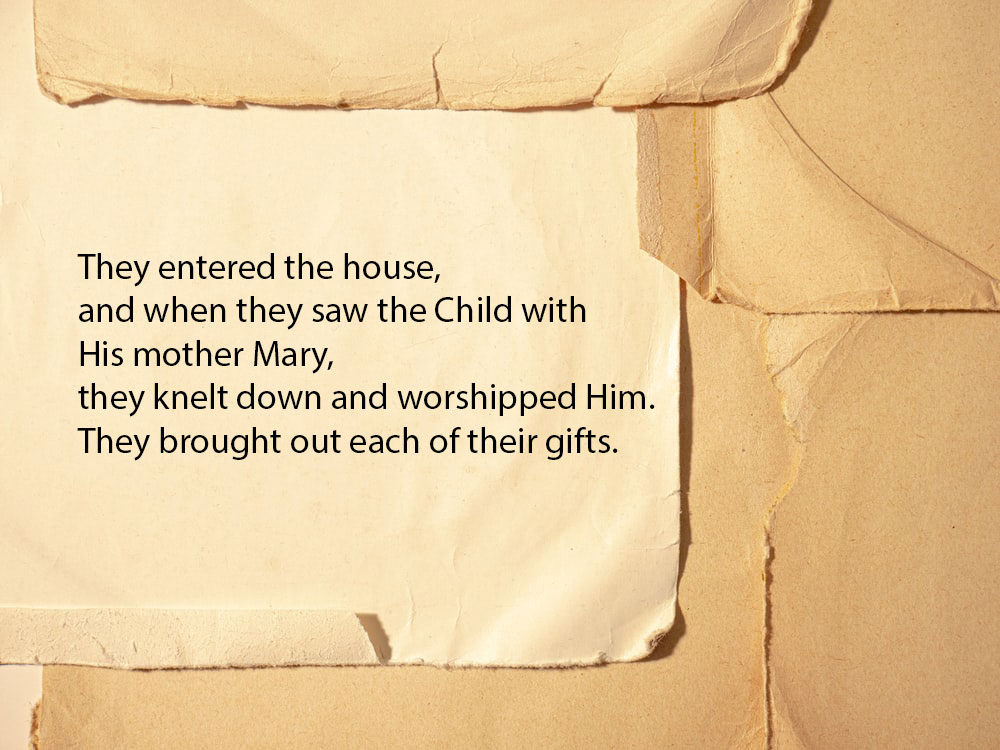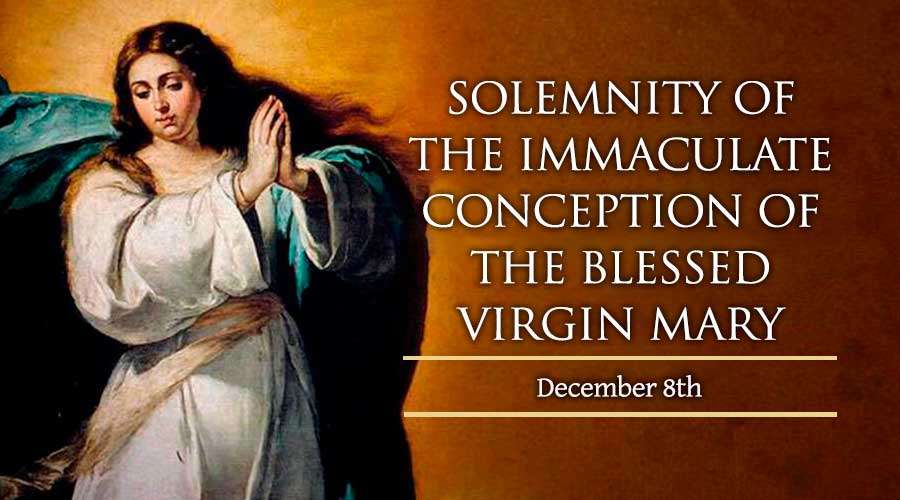by Tamer Nashef
Post Credit: (strangenotions.com)
First, allow me to start this short article with what might be deemed a startling confession: I am not a Catholic, nor am I even a Christian. In fact, I am a secular Muslim and an avid reader of philosophy and history with an unswerving commitment to the unmitigated truth no matter where it is even, nay especially, if it runs counter to commonly held beliefs.
I have spent the last few years researching the history of Christianity, especially the Catholic Church in the Middle Ages, and was shocked to discover that almost everything we had been taught about Catholicism was erroneous and apparently affected by anti-Catholic bias. In contradistinction to what most people both in the West and Middle East think, the Catholic Church and Church Fathers did not suppress science, reason, and knowledge. Quite the opposite, in many cases they even encouraged the acquisition of secular learning and the pursuit of science, and placed a high premium on man’s rational faculties. I was also astonished to discover that the “dark” Middle Ages were not intellectually barren after all. This period was not one of utter stagnation, superstition, or the persistent persecution of natural philosophers. In fact, the universities—where unhindered scholarly and intellectual debates were held—were founded in Europe during the High Middle Ages. In addition, 12th– and 13th-century Catholic scientists, who were committed both to their Christian faith and the scientific method, laid the groundwork for the Scientific Revolution. It is becoming more and more evident that this revolution, which began with the publication of Nicholas Copernicus’ On the Revolutions of the Heavenly Spheres and Andreas Vesalius’ On the Fabric of the Human Body, was not an abrupt outburst of creativity but a continuation of intellectual headway reached in previous centuries, namely the High Middle Ages. What is equally stunning is the importance medieval Catholic theologians and philosophers attached to human intellectual capacities, and their relentless pursuit to create a synthesis of reason and faith. In a nutshell, years of intensive research have made me respect and even admire the Catholic Church even though, as I have said earlier, I hail from a secular Arab family that has taught to investigate all issues without any pre-conceived dogma and to accept the truth even if it turns out to be incongruent with generally accepted views.
I feel utmost respect for the work of Catholic monks and monasteries in the Middle Ages. Their intellectual activities are one of the brightest chapters in the history of the Catholic Church. The monasteries played a positive role as centers of teaching, learning, and scholarship, and they can be aptly described as “proto-universities” (Trombley 58). These monasteries taught grammar, logic, rhetoric, and later mathematics, music, and astronomy, and they were “among the most important libraries in the history of Western thought” because they copied, transcribed, and stored valuable texts (58). While the Catholic Church is persistently accused of destroying classical or Greco-Roman culture, the fact is that the monasteries should be credited for “the careful preservation of the works of the classical world and of the Church Fathers, both of which are central to Western civilization” (Woods 42).
Christianity in general and the Catholic Church in particular could not have stifled or destroyed Classical learning because it emerged in a Greco-Roman environment and as a result it had to have assimilated Greek philosophical notions, such as Logos, synderesis, the idea of a rationally ordered and mechanical universe operating according to fixed and consistent laws, etc. This enabled Christianity to live in peace with Greek/pagan philosophy and rationalism—a crucial accomplishment that Orthodox Sunni Islam has unfortunately failed to make following the suppression of Mu’tazalite thinking (this topic in itself requires a long and thorough study).
Sometimes I wonder out loud: if the Catholic Church had indeed snuffed out the Classical tradition, as many scholars claim, then how come many early and medieval churchmen were conversant with Classical writings? Indeed, many monks and churchman commanded immense knowledge of classical texts, especially those by Virgil, Cicero, Pliny, Ovid, Horace, Plato, etc. These churchmen include, to name but a few, Alcuin (one of the architects of Emperor Charlemagne’s intellectual project), Lupus (805-862), Abbo of Fluery (950-1004), Desiderius (one of the greatest successors of St Benedict as the abbot of Monte Cassino and later served as Pope Victor III), Archbishop Alfano (a monk at Monte Cassino), Gerbert of Aurillac, Saint Hildebert (Woods 40-41). Clement of Alexandria (150-215), whom Pope Benedict XVI has described as “one of the pioneers of the dialogue between faith and reason in the Christian tradition” (16), stressed that the study of Greek philosophy was not only permissible but necessary for Christian believers (Kenny 95). In addition to viewing it as “instruction which prepared for Christian faith”, Clement of Alexandria elevated Greek philosophy to the domain of revelation and compared it to the Old Testament (Pope Benedict XVI 18). In fact, God had given philosophy to the Greeks so as to ensure humanity had reached intellectual maturity by the time of Christ’s arrival (Kenny 95). Justin Martyr (100 – 165) held the Greek philosophical tradition in high regard as well, viewing it as a legitimate property of Christians. Both the Old Testament and Greek philosophy are two paths leading to Christ and therefore there can no contradiction between Greek philosophical ideas and the gospels (Pope Benedict XVI 9-10).
To go back to the valuable monastic activities I was discussing, I would add that in addition to copying and preserving texts, the monks, especially Cistercian ones, were known for their technological sophistication and ingenuity. They used waterpower for all kinds of activities (including crushing wheat and tanning), demonstrated knowledge in metallurgy, and devised sophisticated clocks. In 996, Gerbert of Aurillac, later known as Pope Sylvester II, is believed to have built the first clock for the German town of Magdeburg. For his part, the Benedictine abbot Richard of Wallingford designed in the 14th century an astronomical clock, the most sophisticated one for the next two centuries. Monks also engaged in manual activities that brought benefits for their human surroundings. For example, they cultivated lands, drained swamps, cleared (and at other times preserved) forests, planted trees and vineyards, bred and reared animals, and introduced new crops, etc. They also produced wine, beer, champagne, and cheese, and stored up water for distribution in times of draught. They taught irrigation to peasants in places like Lombardy, and “were the first to work toward improving cattle breeds, rather than leaving the process to chance” (Woods 31).
The Middle Ages “offered some important antecedents to the Italian Renaissance,” including the Carolingian Renaissance of the 8th and 9th centuries; the 10th-century Ottonian Renaissance, and 12th-, 13th- century Renaissance (Trombley 85-86). One of the important intellectual figures of the Carolingian Renaissance is the Irish Neo-Platonist John Scotus Erigena (810-877) whom I admire very much. Erigena was well-versed in Greek and conversant with the writings of both Western and Eastern theologians, especially St. Augustine, Maximus the Confessor, and Denys the Areopagite. Erigena translated the writings of Denys the Areopagite into Latin, thus enabling later medieval theologians, such as St. Bonaventure, to become familiar with the Greek philosopher’s work.
What is truly remarkable about Erigena is the high status he accorded reason. He stressed the harmony between faith and reason because of their common source, namely God, and encouraged its use to shed light on the Scriptures and the writings of Church Fathers. In fact, he seems to have seen reason as an arbiter of the validity of any authority including sacred one: “Any type of authority that is not confirmed by true reason must be considered weak…Indeed, there is no true authority other than that which coincides with the truth, discovered by virtue of reason, even should one be dealing with an authority recommended and handed down for the use of the successors of the Holy Fathers” (Pope Benedict XVI 187). He adds: “Let no authority intimidate you or distract you from what makes you understand the conviction obtained through correct rational contemplation. Indeed, authentic authority never contradicts right reason, nor can the latter ever contradict a true authority. The one and the other both come indisputably from the same source, which is divine wisdom” (187). Commenting on these brilliant passages, Pope Benedict says: “We see here a brave affirmation of the value of reason, founded on the certainty that the true authority is reasonable, because God is creative reason” (187). Erigena’s emphasis on the harmony between faith and reason anticipates the philosophy of 11th-, 12th-, and 13th-century theologians such as Saint Anselm, Thomas Aquinas, Peter Abelard, and others.
I need to say a few words about Gerbert of Aurrillac whom I mentioned earlier as the maker of a sophisticated clock. He is one of the key figures of the Ottonian Renaissance and the most erudite scholar in Europe at the time. His encyclopedic knowledge spanned a broad range of topics, including mathematics, astronomy, philosophy, logic, Latin literature, music, and theology. He secured his place in the history of the scientific development of the West by introducing the abacus or counting board and the Hindu-Arabic numerals (Huff, The Rise of Early Modern Science 50). He also is credited for being “the scholar who first brought Arabic science to the West,” as he spent three years in Spain where he may have acquired knowledge of Arabic scientific work, and “traces of Arabic influence” are manifested in his astronomical and mathematical texts (Zuccato 192-93). Two years before becoming a pope, Gerbert received a letter from the German Emperor Otto III requesting his services and pleading with the great scholar to educate him and explain a book of arithmetic. Gerbert complied with the request, and stressed to the emperor that the Holy Roman Empire had a legitimate right to claim Greek and Roman wisdom as its own (Woods 23).
Like Erigena before him and many church figures after him, Gerbert of Aurrillac underlined the need to combine faith with learning, knowledge, and science. He is reported to have said that “[t]he just man lives by faith, but it is good that he should combine science with faith” and that “[t]he Divinity made a great gift to men in giving them faith while not denying them knowledge,” adding that “those who do not possess it [knowledge] are called fools” (23). It is this profound commitment to reason that has made me admire Catholic philosophers and theologians.
Another Christian scholar and philosopher who has commanded my respect is Saint Anselm (1033-1109), the Archbishop of Canterbury. Anselm has been described as “the father of the Scholastic tradition” (Stokes 48) and “the most important philosopher of the eleventh century” (Kenny 119). His balanced commitment to faith and reason is evident in a saying attributed to him: “It seems to me a case of negligence if after becoming firm in our faith, we do not strive to understand what we believe” (Watson 330). Rather than accept God’s existence purely on the basis of faith, Anselm sought to devise rational arguments for the existence of God, one of which is known as the Ontological Argument. He also came up with a rational argument for the Christian doctrine of Incarnation. Like Aquinas after him, Anselm saw reason as a legitimate tool for defending and justifying the faith.
Anselm’s basic definition of God, which he says both the believer and non-believer would agree on, is the foundation upon which he constructs his ontological proof. He defines God as “a being than which nothing greater can be thought.” God is a perfect being and the greatest entity imaginable or conceivable. It follows that such a being has to exist because existence is a necessary attribute of perfection. If God didn’t exist, He would not be perfect and this would contradict the premise of the argument. Something that exists is surely greater than that which does not. If God is the greatest entity possible then He must exist because otherwise He wouldn’t be. In other words, “the existence of God would seem to follow necessarily from the definition. For it would be a contradiction to suppose that God is on the one hand something than which nothing greater can be thought of and on the other hand does not exist” (Stokes 49).
Anselm’s argument drew a response from a Benedictine monk called Gaunilo who claimed that one could conceive of the greatest island imaginable and, if Anselm’s reasoning were correct, it would follow that the existence of such an island is necessary because otherwise it would not be the greatest island imaginable. Gaunilo charged that Anselm’s argument “licenses the existence of all sorts of imaginary objects and must therefore be faulty” (49). Anselm responded by saying that his definition only applies to God and therefore it cannot be used in relation to other beings or objects. The exchange or debate between Anselm and Gaunilo suggested that nothing lay outside the realm of intellectual inquiry including the issue of God’s existence; it “assumed that one could talk about God in terms that were ‘reasonable’, that God could be treated like anything else…” (Watson 368).
Anselm also set out to justify the Incarnation or the central Christian idea that God became incarnate in man. Adam’s original sin was an offense against God and the scale of atonement had to be congruent with the severity of the offense. Man as a finite being could not by dint of his own efforts expiate the infinite sin against God and therefore needed divine assistance or intervention. Kenny explains: “Satisfaction can only be adequate if it is made by one who is human (and therefore heir of Adam) and one who is divine (and can therefore make infinite recompense). Hence the incarnation of God is necessary if original sin is to be wiped out and the human race is to be redeemed” (121).
No essay on the rational tradition of the Catholic Church and the place of reason in the West can skip the thought of Dominican theologian and philosopher Thomas Aquinas (1225-1274). His importance lies in the bold attempt to stand up to the challenges Aristotelian thought supposedly posed to Christianity (especially the idea of an eternal universe) and to dispel the fears Aristotle’s philosophy had instilled in some ecclesiastical quarters. Aquinas sought to reconcile reason and faith, Christianity and Aristotle, thus incorporating Aristotelian elements into Christian theology. Not only did Aquinas establish common ground between Christianity and Aristotle, but he also found Aristotelian logic a useful tool for defending the Christian doctrine. Like his teacher Albertus Magnus, Aquinas admired Aristotle, seeing that the Greek master’s philosophy was “the greatest achievement of human reason to be produced without the benefit of Christian inspiration” (Watson 330).
Like many theologians of his time, Aquinas advocated the unfettered and free pursuit of knowledge. It is incumbent on human beings to pursue knowledge wherever it leads because it reveals God’s design and enhances man’s knowledge of Him (331). There are only three truths that must be accepted because they cannot be proved rationally: the creation of the universe, the Trinity, and Jesus’ role in our salvation (370). Any other truth, however, should not just be accepted, but it has to be demonstrated and proved by reason. Osborne argues that Aquinas sought “to reinstate reason as a legitimate and worthy element in human nature” (220). The conclusions reached by human reason can never contradict or clash with the Christian doctrine because they both emanate from the same source, God.
This Dominican philosopher also revived the ancient Greek idea that the universe is imbued with order and purpose and that man is a rational creature. God is a rational and just creator who laid down the rational order of the universe and bestowed reason on man. Explaining Aquinas’ thought, Osborne says: “Since both order in the universe and reason in the human mind were deliberate creations of God, it was a legitimate enterprise, indeed a Christian duty, to use the gift of reason to explore the meaning of God’s creation” (221).
As evidence of his commitment to reason, Aquinas tried to prove God’s existence through rational arguments unaided by revelation, known as the Five Ways (the last of which, the teleological argument, best demonstrates Aristotle’s influence). Stokes has described the Five Ways, which appeared in the voluminous work Summa Theologica, as “the clearest and most succinct attempt to prove the existence of God by means of logical argument” (51). These five proofs show that Aquinas viewed reason as a legitimate tool for proving what is arguably the most important article of faith.
In addition to Aquinas, Peter Abelard (1079-1142) is considered one of the icons of rational Christian thought and one of the masters of logic. Huff opines that “it is virtually impossible to pick up any major work on the renaissance of the twelfth century dealing with law, logic, ethics, philosophy, reason, and conscience, as well as the founding of the universities, that does not give a major (and positive) role to the teachings and writings of Abelard” (140). Abelard is primarily remembered for formulating dialectical logic aimed at solving or reconciling what he saw as contradictions in Biblical passages and statements by religious authorities. The dialectical method consists of the following parts: (1) a questio presenting the contradictory passages in a text (2) a propositio spelling out reasons and arguments in support of one position (3) an oppositio stating reasons and arguments in favor of the contrary view (4) a solutio or conclusio resolves the conflict between the propositio and the oppositio (128). Abelard also emphasized the unity of truth and the harmony of its diverse manifestations, saying: “Truth cannot be opposed to truth” (141). His commitment to reason and logic did not in any way detract from his faith as evident in his famous assertion: “I do not wish to be a philosopher if it means conflicting with Paul nor to be an Aristotelian if it cuts me off from Christ” (141).
The Unprecedented Translation Activity
Those who still insist on calling the Middle Ages a “dark” period in the history of Europe choose to ignore the magnificent translation activity in Spain following the expulsion of the Muslim occupiers. There is no doubt that medieval Muslims, with the assistance of Nestorian Christian scholars (such as Hunayn Ibn Ishaq, his son Ishaq, and nephew Hubyash, in addition to Abu-Bishr Matta Ibn Yunus, Yahya ibn Adi’ the Logician, Isa ibn Zur’a, and many others), had preserved Greek texts that had been lost in the West as a result of the Barbarian invasions and disintegration of the Western Roman Empire. Also, many Muslim scholars such as Ibn al-Haytham (a pioneer of the scientific experimental method), Kamal al-Din al-Farisi, Ibn Sina, Al-Razi, Nasir al-Din al-Tusi, Ibn al-Rushd, and others had produced excellent scientific and philosophical works. Following the liberation of some Spanish territories, Latin scholars flocked to these areas and collaborated with Spanish Christians (known as Mozarabics, those Christians who adopted Arabic culture) and Jews, producing translations of Arabic and Greek texts. In most cases, the Jewish and Christian scholars translated the Arabic texts into Spanish and their Western counterparts in turn translated them into Latin (Watson 279-80). This fruitful cooperation resulted in the translation of Ibn al-Haytham’s Optics, the algebra of Al-Khwarizmi, Euclid’s Elements, the medical writings of Ibn Sina (Canon), Galen, and Hippocrates, as well as Ptolemy’s Almagest (Huff 181). This “unprecedented translation activity” or “monumental translation feat” eventually brought the corpus of Aristotle and his commentators, as well as other Greek and Arabic works, into Europe “in scarcely a hundred years” (180).
In Barcelona, Italian mathematician and astronomer Plato of Tivoli collaborated with Savasorda (a Jewish mathematician, astronomer and philosopher) in translating Arabic texts on astrology and astronomy (Watson 279). The center of translation was Toledo, where Archbishop Raymond spearheaded a major translation activity. Examples of productive cooperation between Latin and Iberian scholars include Gerard of Cremona and Gallipus (Ghaleb); as well as Dominicus Gundisalvi and the Jew Avendeath, also known as Ibn Dawwud. Two Englishmen, Adelard of Bath and Robert of Chester played a key role in this activity as well, as the former translated Euclid and Al-Khawarizmi while the latter is “notable for producing the first Latin version of the Qur’an and the first translation of Al-Khawarizmi’s algebra” (280). As a result of this translation activity, “by the close of the 13th century, the bulk of Arabic (and therefore Greek) science had been transmitted to Europe” (280). From the Iberian Peninsula, this knowledge passed into southern French towns and from there to Liege (among other places) and on to Germany and England (280).
The 12th– and 13th-century Renaissance
This translation activity had the ultimate effect of sparking or igniting what is known as the 12th– and 13th-century Renaissance, which included brilliant Catholic scholars and scientists, such as Thomas Aquinas, Albertus Magnus, Robert Grosseteste, Jean Buridan, William of Conches, Thierry of Chartres, Peter Abelard, High of Saint Victor, Thomas Bradwardine, Witelo, and many others.
What characterizes their thought is (1) the idea that the universe is a rationally structured sphere or machine that operates according to consistent, intelligible, and discernable patterns. In other words, there is regularity, order, harmony, and purpose in nature. God is the ultimate or primary cause, but there are secondary causes independent of God that man is capable of discovering and understanding. The laws of nature operate independently of God and on the basis of cause and effect (natural causality). God is a loving, rational, and beautiful creator who does not interfere with the laws He has laid down. In fact, it would be inconsistent with His nature to tamper with these laws or to create randomness and arbitrariness in the cosmos.
Hugh of Saint Victor, for example, perceived orderliness and unity in the universe where all parts are somehow interconnected: “The ordered disposition of things from top to bottom in the network of this universe…is so arranged that, among all the things that exist, nothing is unconnected or separated by nature, or external” (Huff 99-100). He espoused a mechanistic view of the visible universe: “As there are two works, the work of creation and the work of restoration, so there are two worlds, visible and invisible. The visible world is this machine, this universe, that we see with our bodily eyes” (100). For his part, Adelard of Bath hailed the “amazing rational beauty of the universe” (Woods 87) while Thierry of Chartres (d. 1150) asserted that “the world would seem to have causes for its existence, and also to have come into existence in a predictable sequence of time. This existence and this order can be shown to be rational” (Huff 100).
(2) God has endowed man with rational faculties, and as a rational creature, man has the ability to decipher the laws of nature and to unravel the mysteries of the universe. Adelard of Bath said that “[i]t is through reason that we are men,” adding: “Although man is not armed by nature nor is he the swiftest in flight, yet he has that which is better by far and worth more — that is, reason. For by possession of this function he exceeds the beasts to such a degree that he subdues them…You see, therefore, how much the gift of reason surpasses mere physical equipment” (102).
Man also possesses an innate moral faculty or agency that allows him to reach moral truths, solve moral dilemmas, and distinguish between good and evil unaided by revelation (106-108). Furthermore, man has the rational capacity to understand the scriptures and to decipher their mysteries without the aid of revelation (102).
The Catholic view of a rationally ordered universe shot through with purpose and of man as a reasonable creature capable of predicting nature’s operations encouraged medieval Europeans to engage in scientific activities and paved the way for the Scientific Revolution.
It is also noteworthy that this mechanistic view of the universe leaves little room for miracles. In contrast to the skewed belief that Catholicism is riddled with nothing but superstitious beliefs and myths completely detached from reality, here we have Catholic philosophers who seem to believe that miracles are not a norm or a regular occurrence, but a departure from the fixed laws of nature. Miracles do happen, but only against the backdrop of regularity and order. For example, Adelard of Bath charged that “we must listen to the very limits of human knowledge and only when this utterly breaks down should we refer things to God” (87). On the interpretation of Scripture, Andrew of St. Victor argued that the interpreter “should realize this: in expounding Scripture, when the event described admits of no naturalistic explanation, then and only then should we have recourse to miracles” (Huff, “Science and Metaphysics in the Three Religions of the Book” 189).
(3) a strong commitment to doubt, rationalism, and the unhindered, unfettered search for knowledge, learning, and the “truth”: Hugh of Saint Victor encouraged his students to “learn everything” because “later you’ll see that nothing is superfluous” (Watson, 330). He is reported to have also said: “Learn willingly what you do not know from everyone. The person who has sought to learn something from everyone will be wiser than them all. The person who receives something from everyone ends by becoming the richest of all” (Pope Benedict XVI 220). Peter of Poitiers, chancellor of the University of Paris, went as far as saying that “although certainty exists, nonetheless it is our duty to doubt the articles of faith, and to seek, and discuss” (Watson 367). The great logician Peter Abelard said the search for the “truth” is founded on doubt: “We seek through doubt and by seeking we perceive the truth” (366). John of Salisbury, bishop of Chartres, saw reason as central to understanding and knowledge: “It was the mind, which by means of the ratio, went beyond the experience of the senses and made it intelligible, then, by means of the intellectus, related things to their divine cause and comprehended the order of creation, and ultimately arrived at true knowledge, sapentia” (367).
(4) the harmony between the truths of revelation and truths of reason, as both reason and faith originate from the same source, God.
(5) experimentation and observation as the basis for investigating the physical world: Roger Bacon, Albertus Magnus, and Robert Grosseteste can be seen as the precursors or forerunners of the scientific method in the West. These three scientists/priests embraced an empirical or experimental method that prioritized empirical data over theory. Bacon stressed that “the strongest argument proves nothing, so long as its conclusions are not verified by experience” (Woods 94). He added: “Without experiment, nothing can be adequately known. An argument proves theoretically, but does not give the credence necessary to remove all doubt; nor will the mind repose in the clear view of the truth, unless it finds it by way of experiment” (94). Echoing the same sentiments, Albertus Magnus said the aim of natural philosophy or science is “not simply to accept the statements of others, that is, what is narrated by people, but to investigate the causes that are at work in nature for themselves” (95). In science “only experience provides certainty” (Watson 369).
For the sake of intellectual accuracy, I would have to add that the three Christian scientists/theologians mentioned above were influenced by the Islamic medieval tradition of scientific experimentation and observation. Huff points out that “the scientific world of Islam was rich in experimental ideas…in optics, astronomy, and medicine” (218). Ibn al-Haytham and his successor Kamal al-Din al-Farisi performed experiments in optics while .Avicenna’s Canon, which held sway over the medical field in Europe for centuries, laid down rules for testing drugs. Al-Razi refused to accept statements that had not been validated or verified by experiments and observations (216-18).
The experimental method of both Catholic and Muslim scientists stands in contrast with the predominantly theoretical, contemplative, and abstract approach of ancient Greek and Hellenistic scientists. Greek science was founded on all-embracing or overarching theories, and instances that challenged these theories were either brushed aside or forced to somehow conform with these theories. One medical theory, which “would bedevil the practice of medicine for more than two millennia” (Kriwaczek 199), claimed that illness was a result of the imbalance of the four bodily humors: blood, black bile, yellow bile, and phlegm. Aristotle had argued that an object twice as heavy as another object would fall twice as fast if both objects were dropped from the same height. This statement remained unchallenged for centuries even though a simple experiment would have proved him wrong. Though Aristotle collected empirical data for his studies on biology, he “persisted in believing that natural philosophy could be based on purely rational, as opposed to strictly empirical, investigation” (Woods 81). In The Republic, Plato was even more committed to the theoretical and abstract approach than Aristotle: “We shall approach astronomy, as we do geometry, by way of problems, and ignore what is in the sky, if we intend to get a real grasp of astronomy” (Freeman xvii). This Greek attitude to science may have been influenced by Plato’s idea of the Forms, namely that sense perceptions do not convey reality and could only lead to opinion; what we see with our eyes are mere shadows or images of their ideal forms which can only be accessed through contemplation or reflection rather than observation.
Aristotle also made a distinction between two types of knowledge: “techne” and “episteme.” Techne is knowledge of recurring natural patterns or knowledge derived from experience, such as that the sun rises every day, clouds produce rain, etc. Aristotle defined episteme as knowledge that comes from the application of reason and the search for causes (knowledge of the “why” or “how” of things; knowledge of causes; how/why clouds produce rain, why the sun rises every day, etc). In the Greco-Roman world, scholars pursued the acquisition of episteme knowledge rather than techne (Osborne 285-6).
The Establishment of Universities
The establishment of universities in Europe during the Middle Ages is sufficient to debunk the myth of the “Dark Ages.” The first European universities were set up in Bologna (1088), Paris (1090), and Oxford (1096). Subsequently, a spate of other universities cropped up, especially in European cities such as Montpellier, Salamanca, and Cambridge. Certain universities were famous for their instruction in particular subjects: the University of Salerno was famous for its medical studies; Paris for theology and logic; Bologna for civil and canon law (Irnerius and Gratian taught there); and Oxford for mathematics and the natural sciences.
What is striking about these institutions of learning is that they incorporated into their curricula the natural sciences and the newly discovered texts of the Greek ancients and Arabs, especially Aristotle, Ibn al-Haytham, Euclid, Ptolmey, and others. Science was deeply embedded in medieval university education, and that is why Huff goes as far as saying that the medieval universities laid “the foundations for the study of modern science” (180). In other words, the study of science underwent a process of institutionalization during the High Middle Ages, thus enabling its dissemination. What is also interesting is that European universities were legally autonomous entities that provided their students and masters with legal protection and intellectual freedom to pursue their studies undisturbed. They created a protected and autonomous sphere where scholars could freely engage in intellectual and scientific inquiries. As corporate entities, the universities enjoyed several rights and privileges, such as legal autonomy from the church and secular rulers and the right to legislate their own laws and to run their own affairs without outside interference. University scholars enjoyed several privileges and prerogatives, such as exemption from civil duties, local taxes, and the jurisdiction of the town in which the university was located. They also enjoyed protection from the potential rage of the masses (Huff 234).
What struck me the most, however, is that the papacy in many cases played a key role in the establishment of universities and in providing a free academic environment. By the time of the Reformation, 81 universities had already been set up, 33 of which had received papal charters and 20 had obtained both imperial and papal ones (Woods 48). In 1254, Pope Innocent IV conferred upon the University of Oxford the privilege to award degrees without papal, imperial, or royal intervention. Pope Gregory IX issued in 1233 a document entitling students with a master’s degree to teach anywhere in the world, thereby “encouraging the dissemination of knowledge and fostering the idea of an international scholarly community” (49). Two years earlier, this same pope issued a bull protecting the legal and academic autonomy of the University of Paris and giving students and teachers the right to go on strike if their rights were infringed upon. Pope Honorius III acted similarly when he interfered to protect the autonomy and independence of the scholars at the University of Bologna. In other cases, popes protected university students from the rage and abuse of the local townspeople by granting them the benefit of clergy. This meant that they had the right to have their cases heard in ecclesiastical rather than secular courts. Popes like Boniface VIII, Clement V, Clement VI, and Gregory IX are recoded to have intervened to pressure the universities into paying the salaries of the professors (48-51). Pope Innocent IV hailed the universities as “rivers of science which water and make fertile the soil of the universal Church” while Pope Alexander IV (1254-1261) described this institution as “lanterns shinning in the house of God” (65).
It is worth pointing out that the Catholic Church’s sponsorship of scientific activities persisted well after the Middle Ages and many Catholic priests continued making significant and often trailblazing scientific contributions. For example, Nicolas Steno (1638–1686) is considered the father of geology; Athanasius Kircher (1602–1680) the father of Egyptology; Roger Boscovich (1711 –1787) the father of atomic theory; Gregor Mendel (1822 –1884), the founder of the modern science of genetics; and Francesco Lana-Terzi (1631–1687), the father of aviation. Giovanni Battista Riccioli (1598 –1671) is credited with computing the acceleration of falling bodies while Francesco Maria Grimaldi (1618 –1663) discovered the diffraction of light and measured the height of lunar mountains and clouds. Father Nicolas Zucchi is considered the inventor of the reflecting telescope and Father J.B. Macelwane (1883–1956) introduced the first textbook on Seismology in America. All this valuable information is taken from Woods’ highly informative and well-researched book, How the Catholic Church Built Western Civilization.
I have not written this essay to whitewash Catholic history. Nor am I claiming that the Catholic Church has been nothing but infallible or that its record has been immaculate. My aim was to express admiration for the prodigious achievements that Catholicism and the Catholic Church deserve credit for—credit that is not often given to it due to deep-seated bias and firmly established myths.
Works Cited
Freeman, Charles. The Closing of the Western Mind: The Rise of Faith and the Fall of Reason. New York: Vintage Books, 2002. Print.
Huff, Toby. The Rise of Early Modern Science: Islam, China and the West. 2nd edition. New York: Cambridge University Press, 2003. Print.
_________. 2000. “Science and Metaphysics in the Three Religions of the Book.” Intellectual Discourse 8, no. 2: 173-98. Print.
Kenny, Anthony. A Brief History of Western Philosophy. Oxford: Blackwell Publishers, 1998. Print.
Kriwaczek, Paul. Babylon, Mesopotamia and the Birth of Civilization. London: Atlantic Books, 2010. Print.
Osborne, Roger. Civilization: A New History of the Western World. New York: Pegasus Books, 2006. Print.
Pope Benedict XIV. Great Christian Thinkers: From The Early Church Through The Middle Ages. London: Society for Promoting Christian Knowledge, 2011. Print.
Stokes, Phillip. Philosophy: 100 Essential Thinkers. New York: Enchanted Lion Books, 2005. Print.
Trombley, Stephen. A Short History of Western Thought. London: Atlantic Books, 2011. Print.
Watson, Peter. Ideas: A History of Thought and Invention, From Fire to Freud. New York: Harper Perennial, 2005. Print.
Woods E. Thomas. How the Catholic Church Built Western Civilization. Washington: Regnery History, 2012. Print.
Zuccato, Marco. “Gerbert of Aurillac.” Medieval Science, Technology, and Medicine: An Encyclopedia. Ed. Thomas F. Glick, Steven Livesey, Faith Wallis. New York: Routledge, 2005. 192-94. Print.


